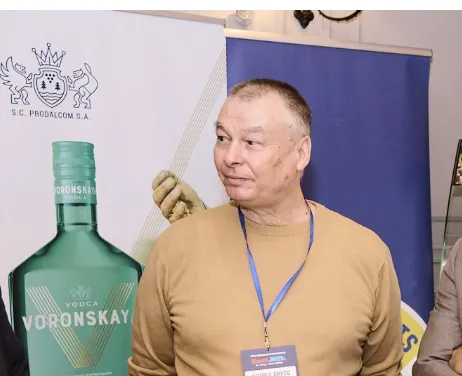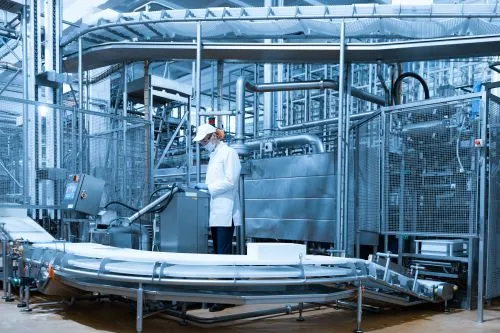
For the Romanian food industry, the meat and meat products market is an absolute priority. This assertion is based both on the natural and human resources involved, as well as on the vital social and economic functions of this sector: to ensure food, the necessary raw materials for products processing, to ensure an active and profitable meat and meat products export, to ensure the environment protection and to maintain the ecological balance. Animal breeding exposure to innovations„In all times, Romania has been and is a country of animal breeders, but for certain species, livestock decreased in the last 20 years, even if the European subsidies reduced this sharp decline, recorded with almost all species, with small exceptions, namely for sheep and goats. Unfortunately, we import very much for the meat industry. It is an unpleasant situation, in a country with huge potential for breeding animals and for a sufficient production for the needs we have. Currently, due to the low number of animals, but also due to the prices and production costs which are higher than in other states, the import is very high.” (Daniel Constantin, minister for agriculture). It is true that, due to the value of the daily consumer basket (that continues to be low), it is hard to predict what will happen in the close future of animal breeding. The more so as the consumers are more and more informed and reconsidering continuously their personal values and their expenditure budgets. That is exactly why the producers believe that their great challenge is to come towards consumers’ needs with relevant offers. Animal breeding plays a decisive role in the population’s supply with food products and in the supply of the food industry with raw materials, as well as in ensuring the necessary quantities for export. Breeding animals for meat is a branch less exposed to product innovations (as nature may not be changed from one day to another). Nevertheless, technical and technological innovations penetrate this sector more and more rapidly, influencing the competitiveness, without neglecting quality issues. The technological progress and the globalization generate constant pressure on the meat products markets, in the European Union’s countries, requiring new and permanent efforts with a view to improving the position on the competitiveness scale. Actual competitiveness involves a profit „ordinarily” resulted, while the structure and the level of raw material costs are unfavorable. In a broad sense, competitiveness in the meat industry becomes the capacity to face competition on the market, by the technological level, but also by the volume of sales performed. The justified optimism of the powerful companies The meat products market is currently facing a tough global recession. Nevertheless, companies have not narrowed their range of types, but on the contrary; most of the companies deliver over 20 products on the market, the most often used raw material being the pork. The average production capacity is maintained at a high level with respect to the range of assortments, the first two places being occupied by the fresh meat and by the salami (particularly, the raw-dried types). When the fresh processed meat is not taken into account (in order to emphasize the situation of higher processing level products), the salami occupy a very important position on the sausages market. Almost half of the number of the producing companies have developed their own brands for the manufactured products. From the point of view of the distribution networks, the hypermarkets remain on the first place, going beyond the local stores. Many companies resorted to various marketing actions: TV spots, radio commercials, advertisments in (non)specialized publications, billboards. As well, many companies chose simultaneous advertising actions. The financial recession had less impact on the meat industry. Among the positive factors influencing the companies profitability, one can easily notice the market and consumption increase. Negative factors relate to threats coming from the macroeconomic environment and from the unfair competition. However, companies seem rather optimistic about the evolution of the main indicators. Positive opinions are stronger with respect to company’s internal variables (the range of asssortments, the turnover and the level of profitability) than the external variables (macroeconomic environment, business environment and the consumption). With respect to the meat products market, as a whole, one can notice a significant increase, close to the minimum limits. The industry has created jobs, has developed productive investments in logistics (i.e. car parks for the transportation of finished products). Top companies have not increased their market share and thus the power, but, on the contrary, they lost about 1% of the market. It is not less true that they hold very high shares (30-50%). There is a fierce competition at the top, where the places on the podium change constantly. A certain confidence has emerged with respect to the evolution of the business environment, the result being correlated also with the perception of unfair competition as a factor of negative influence on the profitability. A great difference between the external variables and the internal ones will bring noticeable improvements. Companies go ahead confident that the turnover, the range of asssortments and profitability will have noticeable improvements or slight improvements. With respect to the negative influence factors, the range and frequency are much diversified. Thus, the following have been identified:
- Staff fluctuation;
- The macroeconomic environment;
- The unfair competition;
- The quality of raw materials;
- Lack of lending and the fluctuation of the exchange rate;
- The market and the consumption.
With respect to the macroeconomic environment, several factors are included: the legislative and institutional instability, gaps in legislation, the low efficiency of the public entities that are responsible for the sector, the business environment, etc. Where quality stumbles Many companies are facing this problem. They made significant investments, implemented HACCP quality management systems, but they do not find high quality raw materials in large lots. On the other hand, the quality of the products made of meat refers to a complex notion, because this includes a triple mandatory prerequisite: sanitation, food value and sensory qualities. Currently, also a fourth prerequisite is added: presentation quality. The last decades were marked by a broad diversification of the food spectrum, more and more aesthetically and attractively packaged, in order to attract the consumer. Simultaneously, however, the tendency to a bad diet has increased, being depleted, on one hand, of certain nutrients that are necessary for the human body, with an excess with respect to the less necessary nutrients, as well as the improper food combining, issues that led to increased risks of nutritional disorders. The influence of meat and meat products on the health condition and its preservation is a matter of continuous topicality. By the consequence of some elements of the current life, very different than that in the past, there exists the risk of alteration by natural contaminants, of more and more intense atmosphere pollution, by the industrial and agricultural activity or agents that are inserted accidentally, during the inadequate treatment of products made of meat. A special attention is currently granted to these issues, as it is known that harmful elements are more and more numerous and there are very frequent cases where fraud is discovered by the total or partial substitution of some basic components with similar substances, but of lower nutritional value or, worse, with substances that are not permitted to human consumption. The correct application of HACCP system involves safe food obtaining and consumption, by observing its principles, that refer to all production stages, from the farm to the consumer’s table. The system ensures the hygienic production that requires the meat products manufacturing in conditions of maximum safety and indicates the achievement of certain sanitation parameters of the product obtained, falling within the limits of avoiding or reducing the risk of pathological diseases occurrence, by the consumption of these products. The utility of the food safety management system implementation in the meat procesing sector is justified by the possibility of the manufacturing entity to control the meat products during the technological flow, in all stages of raw material processing, until the product is obtained and marketed, having this way the possibility to always offer safe products for the consumers. THE TAPE: In identifying and assessing risks, winners will be those who, throughout all stages of the technological flow, take into account the impact of the raw material, of the ingredients, the good hygiene practices, the role of manufacturing processes in the control of possible risks, the categories of consumers of finished products made of meat, identifying correctly to whom the product is addressed, which is specified in all the technical specifications. It is very important that the information offered by the manufacturer reflect the actual content on the product label, so that the consumer may choose the quality he/she wishes. The consumers of this type of products, aware of the situations to which they may expose themselves involuntarily, deem the quality and safety of meat and meat products a required wish, most of the times (?) specified on the label. Commitment and full involvement of the management at every level, of the staff with responsibilities in the production process, making the working staff aware, the dedication, reliability and team effort in the proper functioning of the productive chain ensure an industrial group permanent link, dedicated to the smooth running of the company. Above all this, the role of meat and meat products consumption and implicitly the need of its study is made more obvious if we enumerate the many functions it has in society: the utilitarian function, the social function, mediation, communication and integration with the environment where the individual is cohabiting. By analyzing all these functions of the meat and meat products consumption is highlighted the final goal: the continuous quality improvement.





